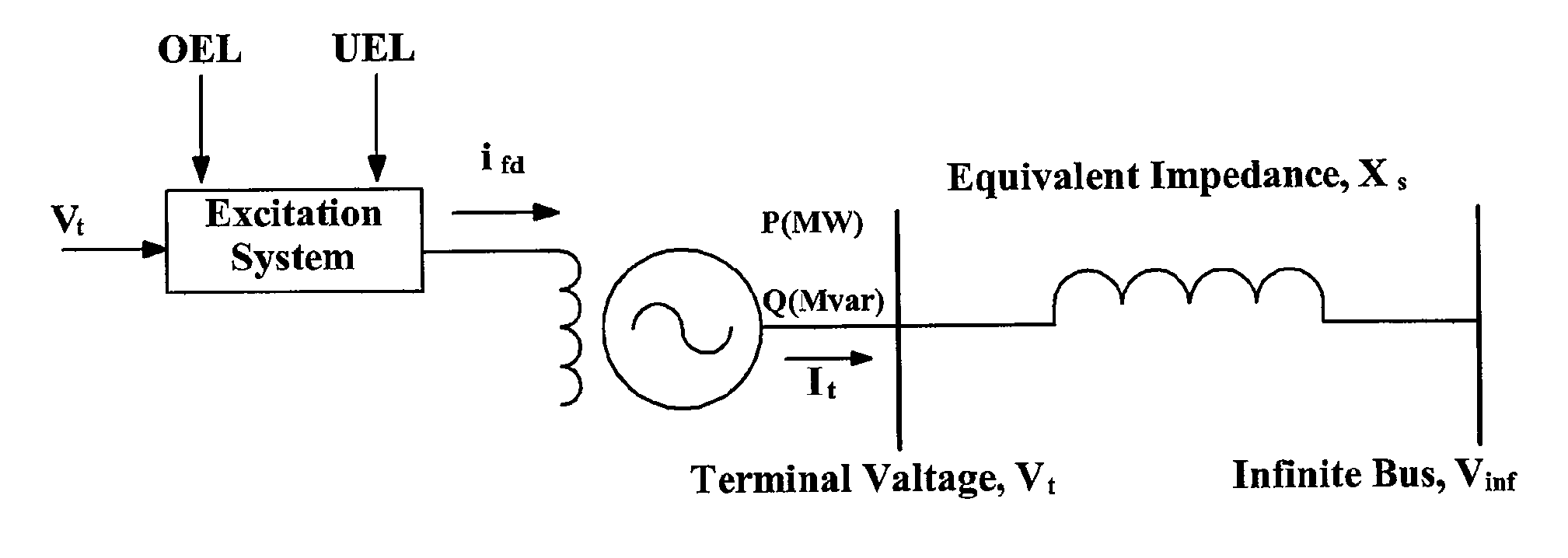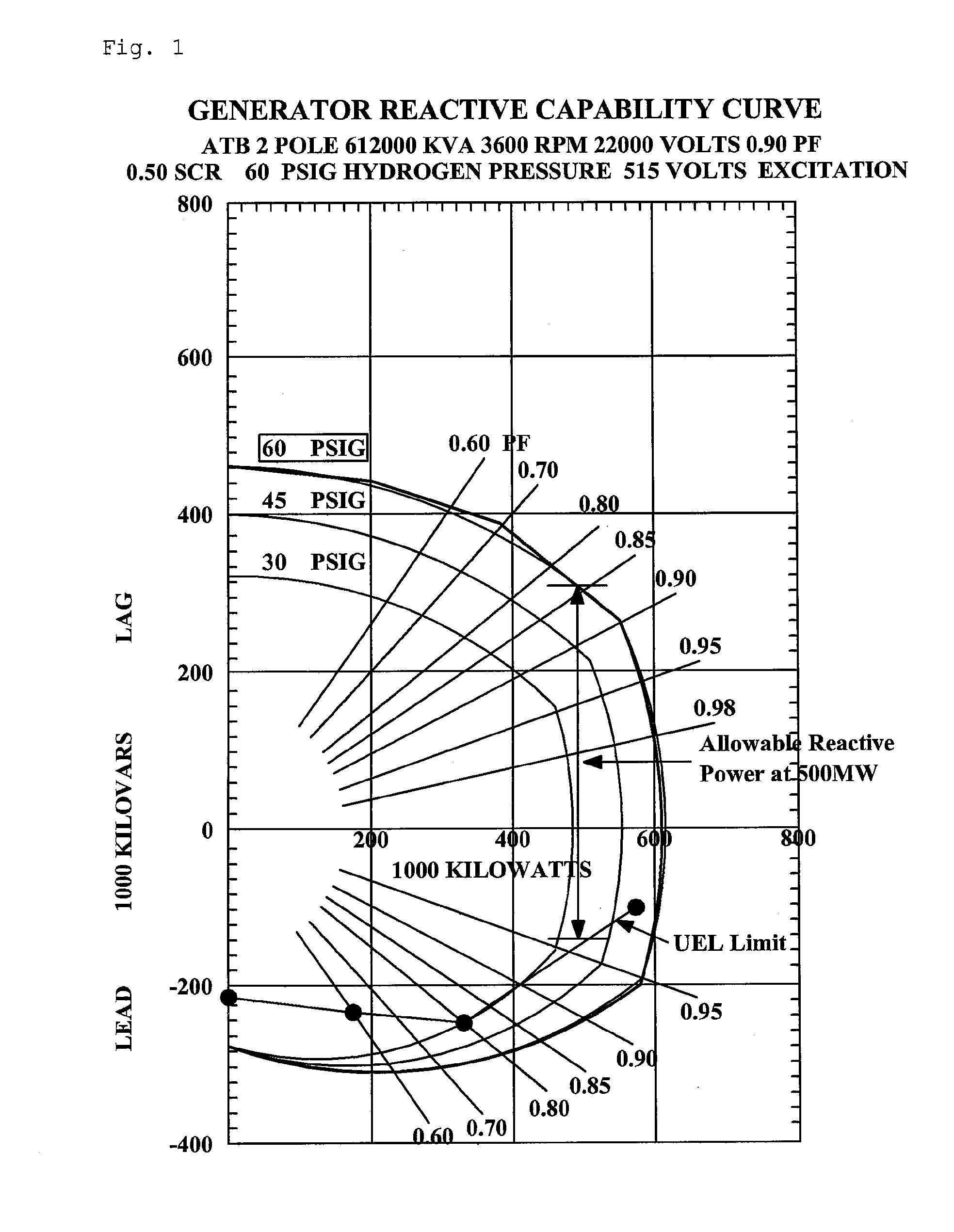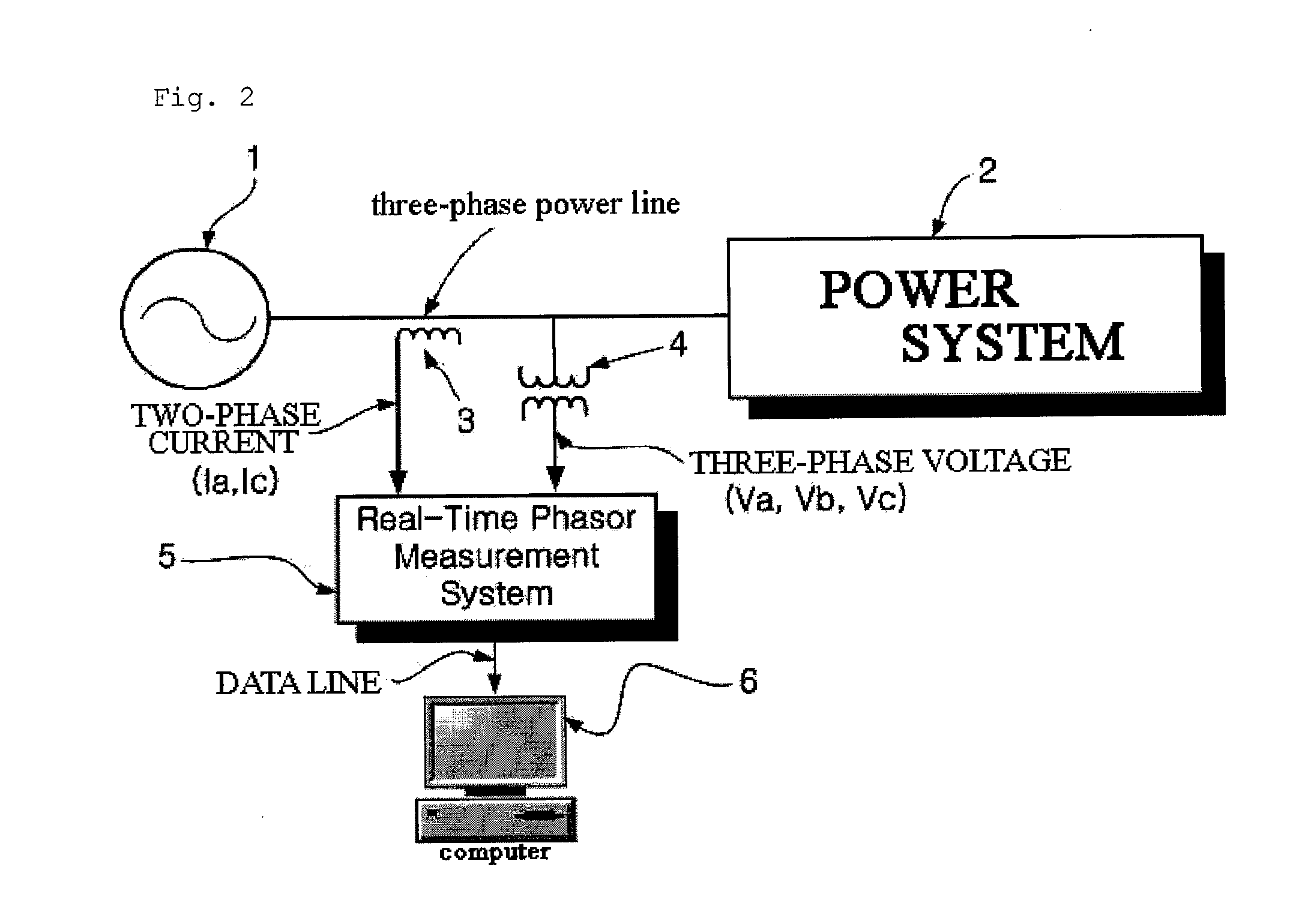Intelligent System and Method for Monitoring Generator Reactive Power Limit Using Machine Model Parameters
a technology of intelligent system and machine model, applied in the direction of electric/magnetic computing, analogue processes for specific applications, instruments, etc., can solve the problems of generator reactive power limit, power failure, and conventional techniques cannot meet this requiremen
- Summary
- Abstract
- Description
- Claims
- Application Information
AI Technical Summary
Benefits of technology
Problems solved by technology
Method used
Image
Examples
embodiments
[0078]Hereinafter, results obtained by applying the intelligent system and method for monitoring a generator reactive power limit using machine model parameters according to the present invention to 612 MVA large thermal generator (cylindrical) are described. A rated terminal voltage is 22 kV and a base field current is 1175 Amp. Machine model parameters to be used are verified machine model parameters which correspond to the following measured results. PSS / E power system simulation program is used.
[0079]—Verified Machine Model Parameters
[0080]Table 1 shows a terminal current, an active power, a reactive power, a field current and a load angle which are actually measured. Table 2 shows normal state machine model parameters extracted and verified according to generator testing. Table 3 shows calculation results according to the machine model parameters and measurement results. The field current and the load angle calculated according to the machine model parameters shown in Table 2 n...
PUM
 Login to View More
Login to View More Abstract
Description
Claims
Application Information
 Login to View More
Login to View More - R&D
- Intellectual Property
- Life Sciences
- Materials
- Tech Scout
- Unparalleled Data Quality
- Higher Quality Content
- 60% Fewer Hallucinations
Browse by: Latest US Patents, China's latest patents, Technical Efficacy Thesaurus, Application Domain, Technology Topic, Popular Technical Reports.
© 2025 PatSnap. All rights reserved.Legal|Privacy policy|Modern Slavery Act Transparency Statement|Sitemap|About US| Contact US: help@patsnap.com



